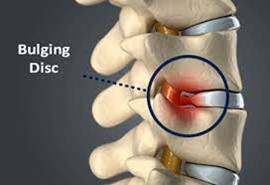
We specialize in treating bulging discs and sciatica.
Traction is a principle concept as well as a treatment technique to help you decompress the disc. Sciatica is addressed by first determining whether the spine, the pelvis, or the hip is the primary culprit. Once this is determined we teach nerve gliding to restore bloodflow and relieve sciatic pain.
Of all the back injuries, few are as misunderstood as disc lesions. In the low back, there are 5 bones (vertebrae) with 5 discs in-between the bones. These discs are made up of collagen (cartilage) very similar to the meniscus (cartilage) in the knee. These discs can and do undergo injury. With excessive, sudden and/or prolonged loading of the disc, disc fibers may tear. These small tears act like most other tissue -they cause swelling, inflammation, bleeding and pain. In the early stages of disc injury, the pain is often felt in the back or even towards the hips and upper thighs.
Very important: DISCS HEAL. Research has shown that when discs tear, they heal over a period of time with the development of a scar – similar to a skin. Adequate blood supply is necessary to provide the disc with nutrition and oxygen as well as remove irritant substances. Movement, including joint mobilization and exercise, improves blood supply. Discs work like a sponge – when compressed, they push fluid out. When the pressure is released, fluid comes into the disc and helps with nutrition. During the night, discs have little to no loading on them and will pull more fluid (approximately 20%) into them, resulting often into some morning stiffness with/without pain.
Physical therapy treatment including exercise, hands-on movement (mobilization and manipulation), and walking programs are designed to help discs heal to the best of their ability.
If not properly treated, disc lesions may become a chronic source of problems. The tears tend to become more frequent and more serious with aging. Patients often describe more frequent episodes of back pain, increased intensity and spread pain even further into the leg. When the tears become large, inflammatory chemicals escape from the disc, and irritate the adjacent nerves, resulting in leg pain. In such an event, patients may undergo epidural steroid injections which aim to reduce the swelling, pain and inflammation. This allows patients to attend physical therapy to help the disc heal, strengthen muscles to avoid further episodes of back pain and make appropriate life-style changes.
Did you know?
- The pressure in a disc is almost twice as much when a person is sitting compared to standing. Prolonged sitting can be especially irritating to the disc (i.e., desk job or traveling).
- MRI’s literally show how much fluid (water) there is in tissue. When a disc injury occurs and an image is taken, the disc will often be described as “bulged.” The good news is that studies show that when the MRI is repeated a few months later, the bulge will be smaller or even gone. This further indicates the healing properties of a disc.
- Discs cannot “slip out of place.” The commonly described “backgoes- out” episodes are often a result of a tear (described above), resulting in severe pain and swelling. This can cause a patient to adopt a posture to avoid further loading (shifting), along with muscle guarding. This should resolve as the pain, swelling and muscle guarding eases and the disc begin to heal.
For more information – ask your Physical Therapist at Spine and Sport
All rights reserved – ISPI 2007-International Spine and Pain Institute
Disclaimer: This content is reviewed periodically and is subject to change as new health information becomes
available. The information provided is intended to be informative and educational and is not a replacement for
professional medical evaluation, advice, diagnosis or treatment by a healthcare professional.


